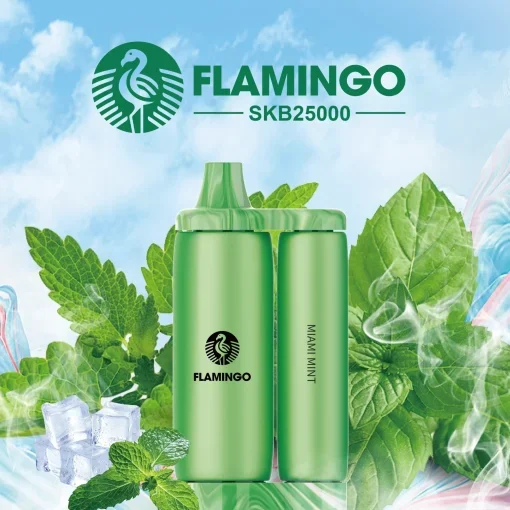The Rise of Vape Culture: What Every Smoke Shop Needs to Know
In recent years, the vaping industry has seen immense growth, transforming from a niche market into a mainstream phenomenon. Smoke shops are now bustling hubs of activity, housing an extensive range of vaporizers, e-liquids, and accessories that cater to both new users and seasoned enthusiasts. To thrive in this ever-evolving landscape, smoke shop owners must stay informed and adapt to the shifting trends that define vape culture.
The Evolution of Vaping
Vaping first gained traction in the early 2000s as an alternative to traditional smoking. The initial devices were rudimentary at best, but over the years, technology has advanced rapidly. Today's vaporizers are sleek, sophisticated, and user-friendly, opening the door for a wider audience. From compact pod systems to high-powered box mods, the variety in devices allows users to customize their vaping experience like never before.
Understanding the historical context of vaping aids smoke shops in catering to their clientele. Many shops have begun to incorporate educational sessions, highlighting the proper use of devices and the differences between various types of e-liquids. By providing this information, smoke shops can foster a sense of community while positioning themselves as authorities in the industry.
The Importance of Quality Products
One critical aspect that cannot be overlooked is the quality of products offered in smoke shops. The vaping market has been plagued with concerns regarding safety and product integrity, leading to an increase in consumer vigilance. Smoke shop owners must prioritize reputable brands that uphold quality standards, ensuring their customers can trust the products they purchase.
One way of highlighting product quality is by providing clear labeling on e-liquids, including information about ingredients and nicotine levels. Featuring third-party lab-tested products can also enhance consumer confidence. Furthermore, smoke shops should foster relationships with manufacturers who go above and beyond in transparency and quality assurance.
Understanding Your Target Audience
Identifying the target audience is pivotal for smoke shops aiming to succeed in the vaping market. The demographic landscape of vape users is diverse, ranging from young adults to older individuals seeking alternatives to traditional smoking. Each group may have different preferences regarding flavor profiles, device types, and brand loyalties.
Utilizing social media platforms to reach potential consumers is crucial. Conducting surveys or polls can provide invaluable insights into customer preferences. By tailoring marketing strategies to the specific needs of their audiences, smoke shop owners can create a loyal customer base that is engaged and informed.
Staying Ahead with Trends and Innovations
Like any industry, the vaping market is dynamic and constantly evolving. Smoke shop owners must stay ahead by keeping an eye on emerging trends, whether they relate to new flavors, device innovations, or even shifts in regulatory landscapes. One example of a rising trend is the increased interest in nicotine salts, which provide a smoother hit and higher nicotine content, appealing to a broader range of users.
Another trend worth noting is the growing focus on sustainability. Many consumers are now demanding eco-friendly options, leading some brands to develop recyclable pods and organic e-liquids. Smoke shops that recognize and respond to these trends are more likely to attract environmentally-conscious consumers and set themselves apart from the competition.
Effective Marketing Strategies for Smoke Shops
Marketing plays a vital role in attracting customers to smoke shops. Digital marketing strategies, including search engine optimization (SEO), social media engagement, and influencer collaborations, can significantly enhance visibility. Regularly updated blogs and educational content about vaping can also improve SEO while establishing the shop as a credible resource.
Utilizing local search optimization can help smoke shops appear in relevant searches. By optimizing Google My Business listings and encouraging customer reviews, smoke shop owners can draw in foot traffic from nearby areas. Promotions such as loyalty programs, discounts on first-time purchases, or referral bonuses can also help attract and retain customers.
The Role of Community Engagement
Engagement with the local community is essential for smoke shops. Hosting events, such as vape competitions or tasting nights, can help foster a sense of community and create lasting relationships with customers. Collaborating with local cafés or event venues can broaden exposure and attract new customers who may not typically visit a smoke shop.
Additionally, smoke shops can consider supporting local charities or initiatives, which can enhance their reputation and demonstrate a commitment to giving back. This kind of strategic engagement not only helps build brand loyalty but also encourages positive word-of-mouth referrals.
Compliance and Safety Standards
As the vaping industry faces increasing scrutiny, compliance with local, state, and federal regulations is crucial for smoke shop owners. Staying informed about laws related to product sales, advertising restrictions, and age verification processes is critical. Smoke shops must ensure that all staff members are trained in compliance matters and that policies are strictly followed to avoid penalties.
Moreover, transparency regarding product safety and regulatory adherence helps build trust among consumers. Providing educational material about the risks associated with vaping and responsible use can position smoke shops as caring and trustworthy establishments.
Conclusion
The vaping industry presents vast opportunities for smoke shops willing to adapt and evolve. By prioritizing product quality, understanding their audience, embracing trends, and engaging with their community, smoke shop owners can navigate the complexities of this vibrant market and pave the way for sustained success.





